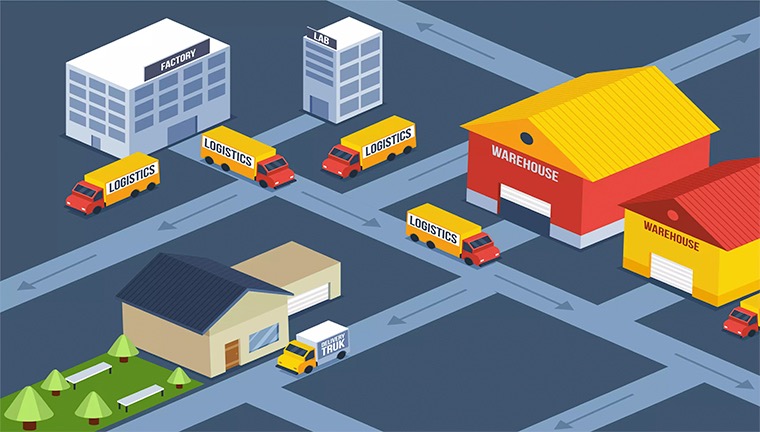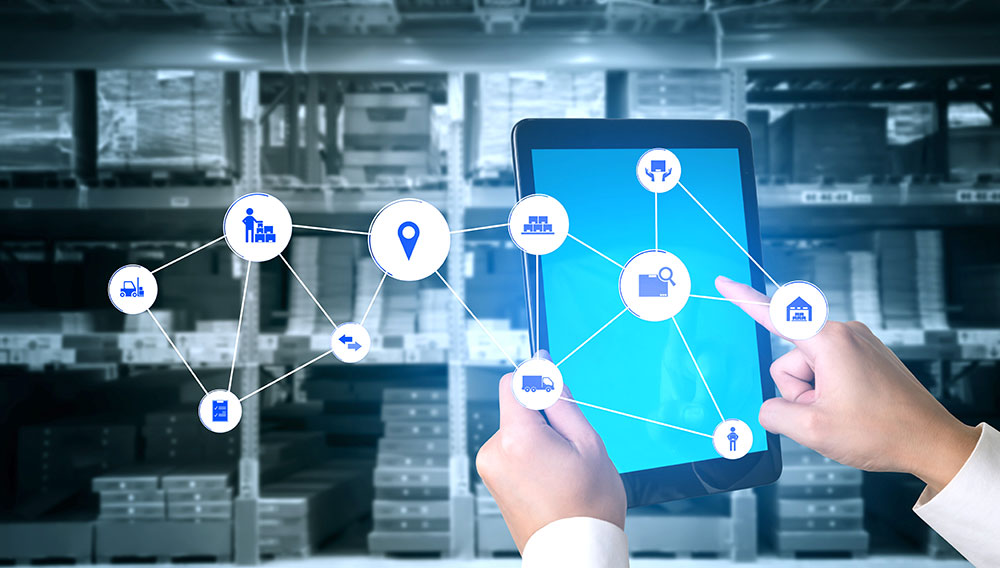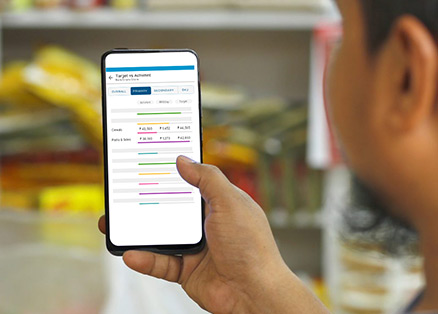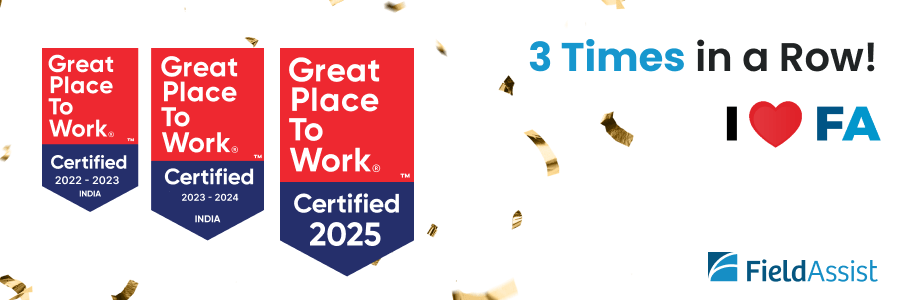For the past decade, Fast Moving Consumer Goods (FMCG) industry has been very active. Since the industry is volatile, all businesses aim to retain their customers by investing in innovative and better techniques to provide a flawless experience to the end consumer thereby increasing FMCG sales.
The journey of goods starts with companies and ends at end consumers. The companies are helped by distributors for selling their products all over the country through FMCG distribution channels.
With the growing demands in both urban and rural areas, the industry was booming but was, and still is, dependent on the FMCG Distribution Network. The industry comprises businesses that are responsible for distributing goods in vast quantities all over the country. Let’s analyze how this industry survived the transition of the humongous FMCG industry.
FMCG in India
Table of Contents
ToggleThe fast-moving consumer goods (FMCG) industry is the fourth largest sector in India. It has been growing at a steady click due to increased disposable income, a growing youth population, and growing consumer brand awareness.
Recent statistics indicate that the urban sector (which accounts for a revenue share of about 65%) is the main source of revenue for the FMCG industry in India. Yet, during the past few years, the FMCG market has risen more quickly in rural India compared to urban India. Indeed, Kirana stores account for four-fifths of all FMCG sales in the country. The semi-urban and rural populations are also expanding quickly, and 50% of all rural expenditure is on FMCG products.
So how do millions of consumer products reach lakhs of stores across the country?
The journey of goods starts with brands that manufacture them and finishes when it reaches the end-consumers. These companies use a vast distribution network to sell their products all over the country through various channels like kirana retail ( general trade), modern trade (organized retail), D2C, e-commerce etc.
Introduction to FMCG Distribution
FMCG distribution refers to the process of getting products from manufacturers to consumers in a timely and efficient manner. FMCG products are goods that get sold fast and at a relatively low cost, such as food, beverages, toiletries, and household products.
FMCG distribution network typically involves intermediaries, including super stockists, distributors, wholesalers, and retailers, who work together to ensure that products are delivered to the right place at the right time. Distributors are responsible for sourcing products from manufacturers and supplying them to retailers.
The key to having a successful FMCG distribution model is an efficient and well-organized supply chain that can handle large volumes of products and respond quickly to changing consumer demand. While smaller brands go via the multi-brand distributor model, established or enterprise FMCG brands like say Haldiram’s and Jockey can afford to have exclusive super stockists or distributors.
Watch How Haldiram’s is boosting a scalable distribution across its ecosystem with FieldAssist
FMCG Distribution in Rural India
As the distribution network is already fairly well established in Metros and Tier I cities, typical FMCG brands have always wooed these territories first because the penetration is easiest. However, once a brand starts to reach saturation in these cities, the only way to scale up is to play the volume game. That’s where rural India delivers in spades.
The population of rural areas of the country heavily outweighs that of the urban areas. So, when digital accessibility hit rural areas, people were introduced to online shopping and demand increased exponentially. The FMCG industry started expanding into Indian rural areas, which led to an increase in distributors and retailers to better service those regions.
The graph below represents the value of the FMCG market in rural and sub-urban India. It can be seen that the market value is increasing gradually every year but is expected to be valued at a whopping 220 billion dollars by the end of the financial year 2025.
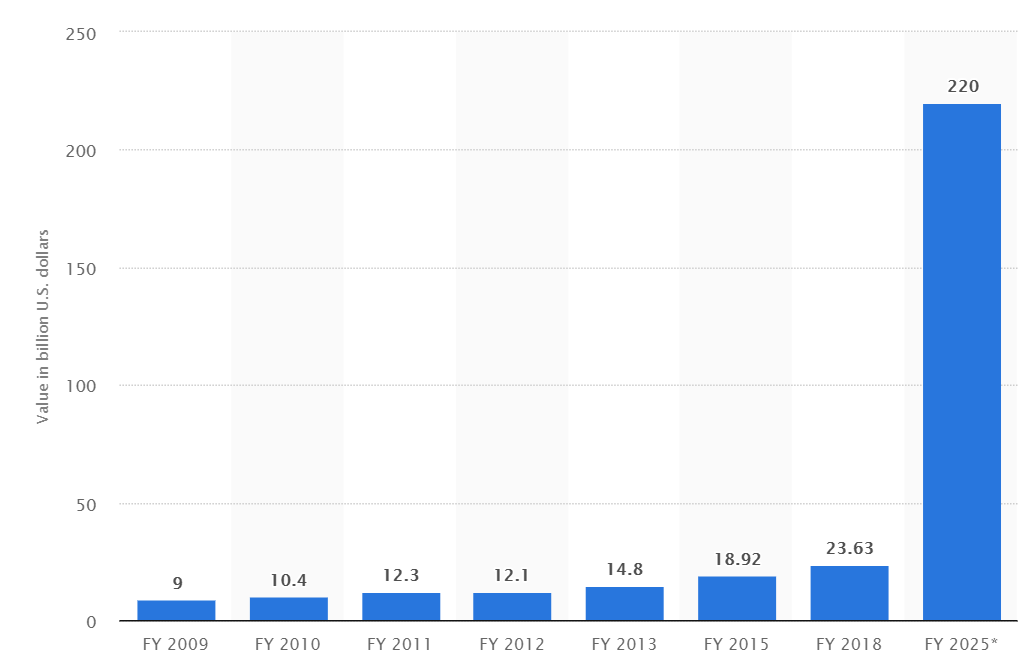
Source: Statista
How does the FMCG Distribution Network work?
Primary Sales: Most FMCG companies aim to sell their products to the end consumers at urban and rural levels. To get their goods distributed, brands sell the goods in bulk to super stockists, who hold products in bulk quantities for transferring them to different distributors. The sales of products from a brand to a distributor are called Primary Sales. Emerging brands or smaller brands do not have a very big product portfolio so the number of SKUs is not very high.
However, enterprise FMCG brands may have a large number of product categories, each with its own sub-segments. For example, Everest Spices may have a premium range of masalas, and within that category, they may have whole spices, ground spice powders, blends and curry pastes. Similarly, a mass range may have similar product segments but in different-sized SKUs.
Secondary Sales: When the super stockist or a distributor sells these goods ahead to different retailers, this is called Secondary Sales. Secondary sales happen across different FMCG distribution channels. For example, brands such as Nivea, Dr Oetker, or Danone sell in mom-and-pop kirana stores, semi-MT (Modern Trade) and large MT outlets such as hypermarkets and supermarket chains.
Tertiary Sales: When a retailer further sells the products to end consumers like you and me, this is referred to as Tertiary Sales.
How do Companies Work with the FMCG Distribution Business Model?
In an FMCG company, the sales organization is headed by a National Sales Manager (NSM) who is responsible for the overall sales of the company at the national level. Usually, the NSM has Zonal Sales Managers (ZSMs) reporting to him or her, where each ZSM handles a large homogenous zone of the country. Under the ZSM come Regional Sales Managers (RSMs) who further lead a team of Area Sales Managers (ASMs).
The Area Sales Managers manage a group of Sales Executives or Sales Officers (SOs) and Territory Sales Representatives (TSRs). The Sales Executives are responsible for selling the products to retailers.
Sometimes, the brand may not want a large frontline sales team on its payroll and instead may ask their distributors to manage the last-mile sales for them. In such cases, distributors deploy their own staff, called Distributor Sales Managers (DSMs) who sell the brand’s products to the retailers.
These salespeople visit retailers, take stock of their inventory, punch orders, and execute other relevant tasks. In smaller companies, these processes are done manually, where orders are recorded in a diary and then conveyed to the distributor at the end of the day. However, more and more FMCG companies today are embracing technology to stay ahead of the competition and to quickly scale up retail sales in India.
The process of automating the numerous tasks of this sales force is referred to as Sales Force Automation. In the FMCG Distribution Network, the need for Sales Force Automation is increasing rapidly. Sales Force Automation has led to a high rise in revenue numbers for multiple companies.
What are some of the challenges in the FMCG Distribution Network in India?
Though the network seems very smooth from the outside, it is a complex journey from the company to consumers. Let’s take a look at the top challenges that companies and distributors face regularly:
Inventory management: Getting visibility on the total inventory of a distributor is a cumbersome task. Sometimes the salespeople might dump the stock towards the end of the month to meet their targets, but if the distributor is not able to sell the stock further to retailers, he will send that back to the company, and the number of returns will suddenly go up.
Tracking Returns/Damaged Goods: The above point aggravates another existing problem: tracking of damaged and returned products. Companies receive damaged products in return from customers every day, leaving the company with the tedious task of tracking every product all around the country.
Lack of transparency between retailers and the company: Another issue for the company is MRP control. The company defines the price of the products at which it is meant to be sold at every level, from the super stockist to the end consumer. However, distributors may charge higher rates from retailers because of retailers’ lack of information. Many times, retailers do not avail of schemes launched by the company because the retailers don’t get to know about them.
Technology that Transforms the Distribution Network – and the Business as a Whole
A large number of humanity’s problems can be solved by the adequate deployment of technology. Technology has helped the FMCG Distribution ecosystem stay insulated from the storm of high product demands, volatile market conditions, and indeed unpredictable black-swan events like a worldwide pandemic.
A Distributor Management System (DMS) solves most of the problems related to handling the various touch points within the Distribution Network. The FieldAssist DMS comes integrated with the Sales Force Automation (SFA) tool. The mobile DMS makes it very easy for distributors and super stockists, especially those working in rural areas, to complete their tasks efficiently. Enterprise FMCG companies use our powerful online DMS to get a seamless view of all the orders that distributors receive from various sources, how many of them have been fulfilled, and find out how the inventory is rotating down to the distributor level.
With AI, Machine Learning, and Big Data being harnessed to create powerful DMS solutions that become the single source of data for the distribution network, the future for tech in the FMCG space seems to be very bright. By leveraging sales history, such technology would enable distributors to predict peak and fall times with utmost accuracy and precision .
In an era when insight-driven sales are a must-have for every company, an intelligent DMS could become the game changer for distribution partners and brands alike. Why not bring your A-Game to your partners too, with our top-of-the-line DMS solution?
Let’s talk and figure out how we can help bring visibility and efficiency to your Primary and Secondary sales.
About Post Author
Rashmi Kapse
Rashmi is a Content Specialist at FieldAssist. After spending 11 years in the Executive Search business she decided to change tracks and follow her passion for writing. For the past 8 years, she has been writing on Sales Tech, HR Tech, FMCG, Consumer Goods, F&B and Health & Wellness.




